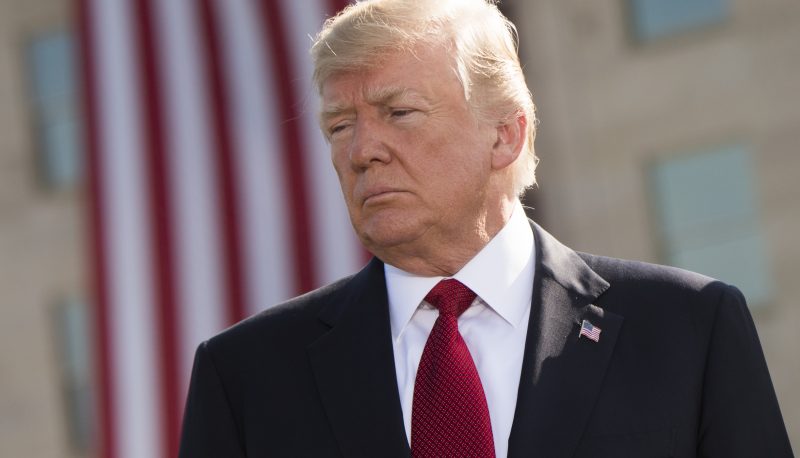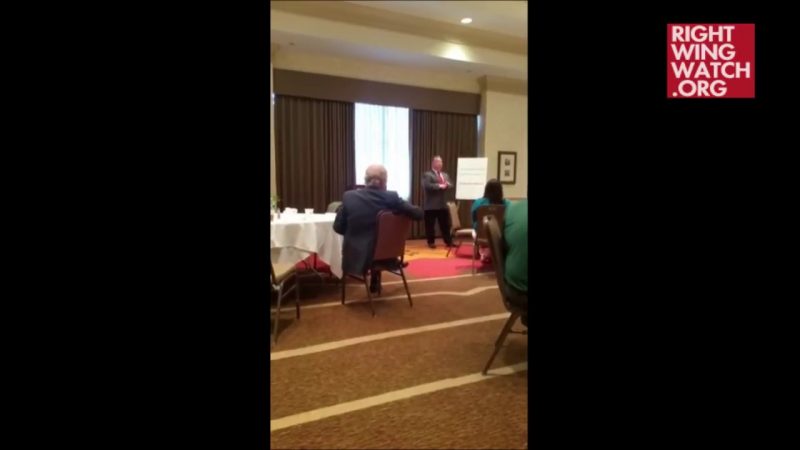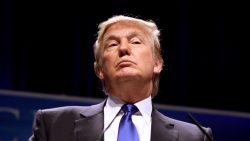This is the second installment in an occasional series about the dynamics between the political right and the white nationalist movement. Read the first installment here.
Aside from their obvious contempt for people who are not white, suspects in three recent white supremacist terrorist attacks have a common ideological thread: disdain for President Trump. One would think that every right-wing extremist would love Trump; after all, the president and his defenders have ushered white supremacist rhetoric into the conservative mainstream. However, some of the most radical players in the modern white nationalist movement have grown to scorn Trump, believing his campaign promises drove false hope for the making of an America more to their liking. They see him as having been absorbed into the very GOP establishment he campaigned against—an institution that extremists believe is complicit in a conspiracy to destroy white people in the Western hemisphere.
The men believed responsible for terror attacks, carried out in the name of white nationalism, that targeted Jews in Pittsburgh, Pennsylvania, and Poway, California, and Muslims in Christchurch, New Zealand, had explicitly declared that they were not fans of the president. The Pittsburgh attacker said he disliked Trump because Trump did not express explicit hatred for Jews. In a manifesto shared prior to his own attack, the Poway suspect described Trump as a “Jew-loving, anti-White, traitorous cocksucker.” The Christchurch attacker, writing in a manifesto, rhetorically asked himself if he liked Trump, then answered: “As a symbol of renewed white identity and common purpose? Sure. As a policy maker and leader? Dear god no.”
Trump supporters across the conservative spectrum have highlighted these men’s attitudes toward the president, claiming that it absolved Trump and other conservatives of any blameworthiness for violence inspired by extremist ideologies docked in the partisan harbor. But holding up an attacker’s disdain for Trump is only a reflection on how particularly radicalized that specific individual is, and is not an accurate reflection of the broader political environment. The reality is that far-right political forces have an undue amount of influence in the United States under Trump. It is notable that Trump, after the Christchurch massacre, sought to minimize the reach of white nationalism, claiming that the ideology was shared by “a small group of people with very, very serious problems.” Yet that didn’t stop him from, weeks later, retweeting a Twitter post from white nationalist propagandist Lauren Southern.
Even if the cheerleading for Trump by hardcore white supremacists has subsided for the moment, the far-right still views Trump as a utility for their agenda and mainstream right-wing rhetoric on issues like immigration has shifted to sound jarringly analogous to white nationalist rhetoric on those topics for the last decade.
The Guardian Angel Never Came
President Trump’s campaign and election in 2016 brought to the political forefront an ensemble of far-right figures that included white nationalists. Leaders of white nationalist groups proclaimed that Trump was speaking to their interests and hailed the then-candidate as a lionhearted voice for white identity and white nationalist causes.
Trump’s presidential bid marked the first time the white nationalist movement ran a widespread national organizing campaign on behalf of a presidential candidate that managed to catch on in a major way. Movement leaders received profiles in major magazines and news outlets, and their causes received broadcast time. But then Trump took office, taking even those activists by surprise. Over the next year, the coalition of extremists and conspiracy theorists that convened to promote Trump splintered and etched lines between their respective camps.
The movement experienced shake-ups in late 2017. Movement leaders at the time organized one of the largest white supremacist gatherings in decades at the Unite the Right event in Charlottesville, Virginia, and the gathering took a chaotic, violent turn, ending in a neo-Nazi murdering someone with his vehicle. Although Trump famously balked at calls for him to condemn those who descended on the college town with apparent intention to cause harm (he said there were “very fine people on both sides,” in Charlottesville that day) he offered little support as the ramifications for the event thrust themselves on the movement.
After Unite the Right, the white nationalist movement faced scrutiny and widespread public condemnation, effectively kneecapping its ability to recruit and build centralized, public-facing groups. Members of the white nationalist movement have been the focus of de-platforming efforts that have seen them booted from universities, social media platforms, and financial systems that they used to fuel and spread their ideology.
So, the white nationalist movement buried its radical currents underground in secretive Discord chat servers, encrypted Telegram chat rooms, and on small social media outlets that have evaded community moderation measures due to lack of exposure. These messages exchanged in private are often much more explicitly violent and racist than the public-facing social media, if one can fathom that.
Support For Israel Has Been a Turnoff
A majority of the white nationalist movement would describe the nation of Israel in pejorative terms, and the Trump administration’s robust support for the Jewish nation since taking office doesn’t sit well with the particularly anti-Semitic cliques in the movement.
On the campaign trail, Trump shared anti-Semitic imagery via Twitter, retweeting a meme depicting then-candidate Hillary Clinton with images of money and a Star of David. He mocked Jews as greedy people, was criticized for associating with anti-Semites, and railed against “globalists”—a word used by many anti-Semites to invoke conspiracy theories alleging that wealthy Jews secretly control governments, banks, and, thus, world events. This excited the white nationalist movement at the time.
Many of the intense sentiments pulsing through white nationalist communication arteries are centered on the hatred of Muslim and Jewish people. Eric K. Ward wrote for The Public Eye in 2017 that anti-Semitism is “the theoretical core of White nationalism” because it answers a question central to the ideology’s premise of a victimization of white people (Jews are not regarded as “white” in the white nationalist worldview), who are seen as being systematically evicted from the world’s power centers. Ward explains the frame of mind:
How could a race of inferiors have unseated this power structure through organizing alone? For that matter, how could feminists and LGBTQ people have upended traditional gender relations, leftists mounted a challenge to global capitalism, Muslims won billions of converts to Islam? How do you explain the boundary-crossing allure of hip hop? The election of a Black president? Some secret cabal, some mythological power, must be manipulating the social order behind the scenes. This diabolical evil must control television, banking, entertainment, education, and even Washington, D.C. It must be brainwashing White people, rendering them racially unconscious.
What is this arch-nemesis of the White race, whose machinations have prevented the natural and inevitable imposition of white supremacy? It is, of course, the Jews. Jews function for today’s White nationalists as they often have for antisemites through the centuries: as the demons stirring an otherwise changing and heterogeneous pot of lesser evils.
Within white nationalist circles, the willingness to explicitly “name” Jews for the alleged woes certain white people in the Western hemisphere think they face is a hard line that distinguishes the public-facing propagandists from the true believers. The public-facers refer to “the globalists” in abstract terms; the true believers start naming wealthy Jewish families. Some neo-Nazi figures, including failed California Senate candidate Patrick Little, have devoted their entire political careers to spreading hatred of Jews.
For example, Paul Nehlen, a white nationalist and anti-Semite who failed in his bid for a House of Representatives seat in Wisconsin last year, lost the support of far-right demagogues including Ann Coulter and Steve Bannon after he began including outbursts against Jewish people in his campaign messaging. As he continues to plunge down a sinkhole of violent racist and anti-Semitic language, he has grown resentful of Trump, believing that the president has sold out his agenda to Jewish interests.
Some—and often the most dangerous—agents in the extreme right share Nehlen’s beliefs that Trump has been compromised by powerful Jews they believed he would fight once elected.
Immigration Measures Aren’t Heartless Enough
As Trump entered office, white nationalists had high hopes. Trump categorized immigrants as criminals; he promised to build a physical wall to keep them out of the country. Trump said that he thinks “Islam hates us,” and called for a Muslim ban. He railed against “political correctness” and “fake news,” which white nationalists perceived as an echo of their messaging about “social justice warriors” who promote diversity and their allegations of mainstream media outlets’ supposed anti-white agendas. And to top it all off, Trump promised the construction of a physical barrier at the U.S.-Mexico border.
This is all to say that on his way to the Oval Office, Trump had effectively drop-kicked a bucket of rhetorical gasoline over the deeply entrenched flares of white nationalism woven in the United States.
The white nationalist movement, often building off its anti-Semitic framework, believes that global leaders are encouraging immigration of non-white people into white “homelands” in Europe and the United States. Movement leaders saw Trump’s rhetoric about immigration as a promise to end what white nationalist declare to be the “great replacement” of white people in the Western hemisphere. Despite the fact that Trump has given the movement much of what it said it wanted—the aggressive characterization and treatment of immigrants—and mainstream rhetoric about immigration in conservative circles has shifted further to the right, some movement leaders still do not feel it has been enough to prevent what they believe will be the eventual “extinction” of white people.
With a president some felt no longer had their backs, some grew resentful. After all, voices like Jared Taylor, the founder and editor of the white nationalist commentary outlet American Renaissance, had said that the then-dubbed “alt-right” would remain loyal only as long as Trump stopped “discrimination against whites” and slowed “the reduction of whites to a minority,” aims many now doubt the president sufficiently seeks to fulfill.
Incoherent, Violent White Nationalist Groups Grow
The suspects in recent acts of white nationalist terror have done so in “lone wolf” style attacks; they have stockpiled weapons and armor, planned mass killings, and have arranged to carry out their violence alone. Solo acts of violence have always been a staple of the white nationalist movement, but the recent uptick in high profile acts of white nationalist terror attacks is emblematic of the disarray and lack of organizational structure in the white nationalist movement in its current state—a kind of disaggregation that carries its own horrific dangers.
Some groups like Identity Evropa have attempted to re-brand themselves (Identity Evropa is now calling itself the American Identity Movement) in hopes of obscuring the violent undercurrent embedded in the hate movement within which they exist. But as groups like this attempt to brand themselves closer to mainstream conservatism, the true believers of the cause with nothing to lose have drifted into dark corners where they obsess over violence.
The clean-cut, suit-and-tie aspects of the white nationalist movement, as symbolized by Richard Spencer during his brief spurt of fame, were most aggressively impacted by the blowback against white nationalism in the public sphere, but secretive violent groups have emerged to fill the void. Groups like Atomwaffen Division (AWD) organized online; AWD members have been responsible for multiple murders.
The most radical members of the movement, primed by conspiracy theories and a belief that white people are on the path to extinction, have taken matters into their own hands under the declaration of “accelerationism” and seek to enact the societal change they wish to see through bloodshed and chaos.
In the meantime, the Department of Homeland Security has disbanded a counterterrorism unit that focused on such groups, even as repudiations of the president by the killers of Christchurch, Pittsburgh and Poway lends cover to the administration’s policies against immigrants, Muslims and people who belong to minority populations throughout the United States.









